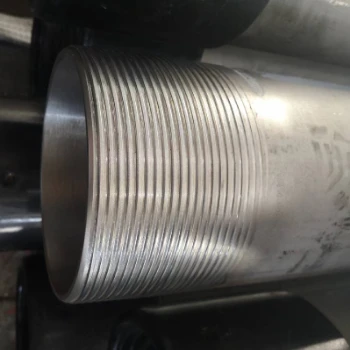- Afrikaans
- Albanian
- Amharic
- Arabic
- Armenian
- Azerbaijani
- Basque
- Belarusian
- Bengali
- Bosnian
- Bulgarian
- Catalan
- Cebuano
- Corsican
- Croatian
- Czech
- Danish
- Dutch
- English
- Esperanto
- Estonian
- Finnish
- French
- Frisian
- Galician
- Georgian
- German
- Greek
- Gujarati
- Haitian Creole
- hausa
- hawaiian
- Hebrew
- Hindi
- Miao
- Hungarian
- Icelandic
- igbo
- Indonesian
- irish
- Italian
- Japanese
- Javanese
- Kannada
- kazakh
- Khmer
- Rwandese
- Korean
- Kurdish
- Kyrgyz
- Lao
- Latin
- Latvian
- Lithuanian
- Luxembourgish
- Macedonian
- Malgashi
- Malay
- Malayalam
- Maltese
- Maori
- Marathi
- Mongolian
- Myanmar
- Nepali
- Norwegian
- Norwegian
- Occitan
- Pashto
- Persian
- Polish
- Portuguese
- Punjabi
- Romanian
- Russian
- Samoan
- Scottish Gaelic
- Serbian
- Sesotho
- Shona
- Sindhi
- Sinhala
- Slovak
- Slovenian
- Somali
- Spanish
- Sundanese
- Swahili
- Swedish
- Tagalog
- Tajik
- Tamil
- Tatar
- Telugu
- Thai
- Turkish
- Turkmen
- Ukrainian
- Urdu
- Uighur
- Uzbek
- Vietnamese
- Welsh
- Bantu
- Yiddish
- Yoruba
- Zulu
Versatile Coupling Tube Fittings for Efficient Piping Solutions in Various Applications
Understanding Coupling Tube Fittings A Comprehensive Guide
Coupling tube fittings are essential components in various industries, facilitating the seamless connection and disconnection of tubes in fluid and gas systems. These fittings play a critical role in ensuring the efficiency and safety of operations in applications ranging from plumbing to aerospace. Understanding what coupling tube fittings are, their types, applications, and installation processes is vital for anyone involved in these fields.
What are Coupling Tube Fittings?
Coupling tube fittings are devices that join two ends of a tube or pipe, allowing for the transfer of liquids or gases. They are designed to create a tight seal, preventing leaks and ensuring that the flow of fluids remains uninterrupted. These fittings can be made from various materials, including stainless steel, brass, and plastics, depending on the application and the substances being transported.
Types of Coupling Tube Fittings
1. Threaded Couplings These fittings feature internal or external threads that securely bond two pipe ends together. They are commonly used in plumbing and gas applications, providing a reliable connection that can withstand high pressures.
2. Welded Couplings Welded couplings involve permanently joining tubes through welding. This method provides high strength and durability, making it suitable for high-pressure systems in the oil and gas industry.
3. Compression Couplings These fittings use a compression technique to join two tubes. A compression nut and ring are employed to tighten around the tube, creating a leak-proof connection. Compression fittings are widely used in refrigeration and air conditioning systems.
4. Flanged Couplings Flanged couplings provide a robust method for connecting pipes, using a flange to create a secure joint. They are easy to assemble and disassemble, making them ideal for maintenance in large pipelines.
5. Push-to-Connect Fittings A newer design, push-to-connect fittings allow for easy installation without the need for tools. The fitting automatically seals when a tube is pushed into it, streamlining the assembly process in many industrial applications.
Applications of Coupling Tube Fittings
Coupling tube fittings are utilized across a broad spectrum of industries
- Plumbing In residential and commercial plumbing, coupling fittings are crucial for connecting different pipe segments.
coupling tube fitting

- Automotive Coupling fittings play a vital role in fuel systems, heating and cooling systems, and other fluid transport systems in vehicles
.- Manufacturing In various manufacturing processes, these fittings are used to connect hydraulic and pneumatic lines, ensuring smooth operation.
- Chemical Processing In chemical plants, coupling fittings help transport a wide range of chemicals safely and efficiently.
- Aerospace High-pressure systems in aircraft rely on coupling fittings to ensure the integrity of fuel and hydraulic lines.
Installation and Maintenance
Proper installation and maintenance of coupling tube fittings are critical to ensure their longevity and efficiency. Here are some essential steps to follow
1. Selecting the Right Fitting Choose a fitting that matches the tube size and material. Ensure that it is suitable for the substance being transported.
2. Preparing the Tubes Cut the tubes cleanly, ensuring no burrs or debris are left. Deburr the edges to ensure a smooth connection.
3. Installation Depending on the type of fitting, follow the appropriate installation method (threading, welding, compression, etc.). Make sure to follow manufacturer guidelines to avoid mishaps.
4. Testing for Leaks After installation, conduct a pressure test to ensure there are no leaks. This is crucial, especially in high-pressure systems.
5. Regular Inspections Periodically inspect coupling fittings to identify signs of wear or corrosion. Regular maintenance helps prevent failures that can lead to system shutdowns or costly repairs.
Conclusion
Coupling tube fittings are indispensable in numerous applications, providing reliable connections that ensure the safe and efficient transport of fluids and gases. By understanding the various types of fittings and their specific applications, professionals can make informed decisions that enhance operational performance and safety. Proper installation and maintenance practices are essential in extending the lifespan of these fittings, ultimately contributing to the efficiency of the entire system.
-
Tubing Pup Joints: Essential Components for Oil and Gas OperationsNewsJul.10,2025
-
Pup Joints: Essential Components for Reliable Drilling OperationsNewsJul.10,2025
-
Pipe Couplings: Connecting Your World EfficientlyNewsJul.10,2025
-
Mastering Oilfield Operations with Quality Tubing and CasingNewsJul.10,2025
-
High-Quality Casing Couplings for Every NeedNewsJul.10,2025
-
Boost Your Drilling Efficiency with Premium Crossover Tools & Seating NipplesNewsJul.10,2025







